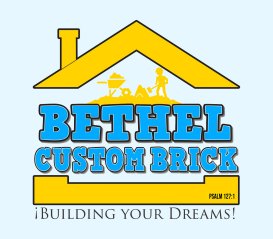Masonry chimneys are a hallmark of older homes, offering both aesthetic appeal and historical value. However, as these chimneys age, they can develop issues that compromise their structural integrity, safety, and functionality. Understanding the common problems found in older masonry chimneys—and knowing how to address them—can help homeowners maintain these important features while avoiding costly repairs down the line.
Common Issues in Older Masonry Chimneys
1. Cracked or Spalling Bricks:
- The Problem: Over time, exposure to moisture and freeze-thaw cycles causes bricks to crack, flake, or break apart. This is known as spalling.
- Why It’s Concerning: Spalling bricks weaken the chimney’s structure and can lead to collapse if left untreated.
- The Solution: Damaged bricks should be replaced with matching materials, and the chimney may require waterproofing to prevent future spalling.
2. Deteriorated Mortar Joints:
- The Problem: Mortar joints erode over time due to weather exposure, leaving gaps between the bricks.
- Why It’s Concerning: Weakened mortar compromises the chimney’s stability and allows water to penetrate the masonry.
- The Solution: Repointing involves removing and replacing damaged mortar to restore the chimney’s integrity.
3. Chimney Leaning or Tilting:
- The Problem: A leaning chimney often indicates foundation issues or severe structural damage.
- Why It’s Concerning: A tilting chimney is a serious safety hazard that could collapse without intervention.
- The Solution: The foundation should be inspected and repaired, and the chimney may need partial or full rebuilding.
4. Water Damage:
- The Problem: Moisture enters the chimney through cracks, missing flashing, or an unprotected top, leading to mold, efflorescence, and structural degradation.
- Why It’s Concerning: Water damage accelerates the deterioration of the masonry and can cause interior leaks.
- The Solution: Installing a chimney cap, repairing flashing, and applying waterproofing treatments can prevent further damage.
5. Damaged Chimney Crown:
- The Problem: The chimney crown, located at the top of the chimney, is prone to cracking due to weather exposure and aging materials.
- Why It’s Concerning: A damaged crown allows water to infiltrate the chimney, causing internal and external damage.
- The Solution: Repairing or replacing the crown with durable materials protects the chimney from moisture.
6. Creosote Buildup:
- The Problem: Creosote, a byproduct of burning wood, accumulates inside the flue over time.
- Why It’s Concerning: Excessive creosote is a fire hazard and can also obstruct proper airflow.
- The Solution: Regular chimney cleaning removes creosote and ensures safe operation.
7. Unlined or Deteriorated Flue Liners:
- The Problem: Many older chimneys lack liners, or their liners may be cracked or corroded.
- Why It’s Concerning: Flue liners protect the chimney from heat and corrosive gases while improving draft efficiency. A damaged or missing liner increases fire risks and reduces safety.
- The Solution: Installing or relining the chimney with a modern liner enhances safety and performance.
8. Efflorescence:
- The Problem: Efflorescence appears as white, powdery stains on the chimney surface caused by salt deposits left behind when water evaporates.
- Why It’s Concerning: Efflorescence indicates excessive moisture within the masonry.
- The Solution: Addressing the source of moisture and applying waterproofing prevents future occurrences.
9. Blocked Chimney:
- The Problem: Debris, animal nests, or collapsed masonry can obstruct the flue.
- Why It’s Concerning: Blockages prevent proper ventilation, allowing smoke and harmful gases like carbon monoxide to enter the home.
- The Solution: A professional chimney sweep can safely remove obstructions and inspect for underlying issues.
How to Address These Issues
- 1. Regular Inspections: Annual chimney inspections help identify and address small issues before they escalate into major problems.
- 2. Professional Repairs: Hiring a skilled mason ensures that repairs, such as repointing or brick replacement, are performed correctly using appropriate materials and techniques.
- 3. Install Modern Features: Adding a chimney cap, flashing, and flue liner provides protection against water, debris, and fire hazards while improving efficiency.
- 4. Routine Maintenance: Regular cleaning and waterproofing extend the lifespan of the chimney and prevent costly damage.
- 5. Restore Historical Features: For older chimneys with unique architectural details, restoration preserves the chimney’s character while ensuring it meets modern safety standards.
Tips for Maintaining an Older Masonry Chimney
To keep your older chimney in top condition, follow these maintenance tips:
- Inspect After Severe Weather: Check for cracks or damage following storms or freeze-thaw cycles.
- Reapply Waterproofing Every Few Years: Protect the masonry from moisture with periodic sealant applications.
- Burn Seasoned Firewood: Using properly dried wood reduces creosote buildup.
- Clean the Chimney Annually: Regular cleaning ensures safe and efficient operation.
Bethel Custom Brick – Your Partner in Masonry Chimney Restoration
At Bethel Custom Brick, we specialize in addressing the unique challenges of older masonry chimneys. Serving the Detroit Metro area, our experienced team offers professional inspections, repairs, and restoration services tailored to preserve the beauty and functionality of your chimney. Contact us today to schedule an inspection and let us help you protect your investment while maintaining the charm of your home.


